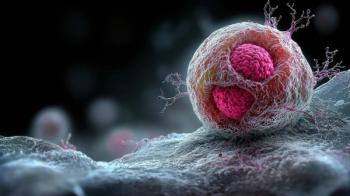
FDA Approves Eflapegrastism-xnst Injection for Adult Patients with Non-Myeloid Malignancies
Eflapegrastism-xnst injection (Rolvedon, Spectrum Pharmaceuticals) is indicated to lower the incidence of infection, as demonstrated by febrile neutropenia, in adult patients with non-myeloid malignancies.
The FDA has approved eflapegrastism-xnst injection (Rolvedon, Spectrum Pharmaceuticals) to reduce the incidence of infection, as demonstrated by febrile neutropenia, in adult patients with non-myeloid malignancies receiving myelosuppressive anti-cancer drugs associated with clinically significant incidence of febrile neutropenia.1
Febrile neutropenia is defined as a condition marked by fever and a lower than normal amount of neutrophils in the blood. Neutrophils are white blood cells that help fight infection and when low, can increase the risk of infection.2
Eflapegrastism-xnst injection is a novel, long-acting granulocyte colony-stimulating factor (G-CSF). It is not indicated for the mobilization of peripheral blood progenitor cells for hematopoietic stem cell transplantation.1
“Rolvedon’s approval marks Spectrum’s transformation to a commercial-stage company with the opportunity to compete in a $2 billion dollar market, and offers a unique value proposition,” said Tom Riga, president and chief executive officer, of Spectrum Pharmaceuticals, in a press release. “This approval is a significant milestone for our development team and collaboration with Hanmi Pharmaceutical. On behalf of Spectrum, I would like to thank all of the patients, families, health care providers, and our own team members for bringing this goal to fruition.”1
Eflapegrastism-xnst has a contraindication in patients with a history of serious allergic reactions to eflapegrastism, pegfilgrastism, or filgrastism products, with reactions including anaphylaxis.1
Other warnings and precautions include:1
- Splenic rupture
- Acute respiratory distress syndrome
- Serious allergic reactions
- Sickle cell crisis in patients with sickle cell disorders
- Glomerulonephritis
- Leukocytosis
- Thrombocytopenia
- Capillary leak syndrome
- Potential for tumor growth stimulatory effects on malignant cells
- Myelodysplastic syndrome (MDS) and acute myeloid leukemia (AML) in patients with breast and lung cancer
- Aortitis
- Nuclear imaging
The most common adverse events (AEs) were fatigue, nausea, diarrhea, bone pain, headache, pyrexia, anemia, rash, myalgia, arthralgia, and back pain. Further, permanent discontinuation due to an AE occurred in 4% of patients who received eflapegrastism-xnst, with this AE being in the form of a rash for 3 patients.1
REFERENCES
- Spectrum Pharmaceuticals Receives FDA Approval for ROLVEDON™ (eflapegrastim-xnst) Injection. Spectrum Pharmaceuticals. September 9, 2022. Accessed September 15, 2022.
https://investor.sppirx.com/news-releases/news-release-details/spectrum-pharmaceuticals-receives-fda-approval-rolvedontm - National Cancer Institute Dictionaries. NIH. Accessed September 15, 2022.
https://www.cancer.gov/publications/dictionaries/cancer-terms/def/febrile-neutropenia
Newsletter
Stay informed on drug updates, treatment guidelines, and pharmacy practice trends—subscribe to Pharmacy Times for weekly clinical insights.






















































































































































































































